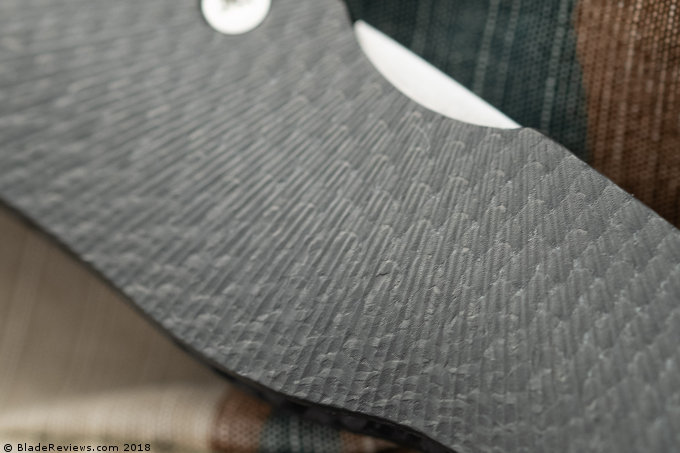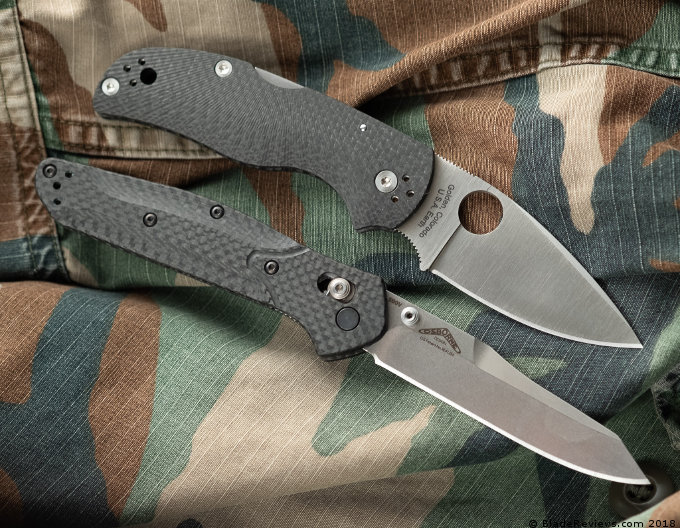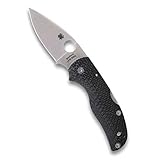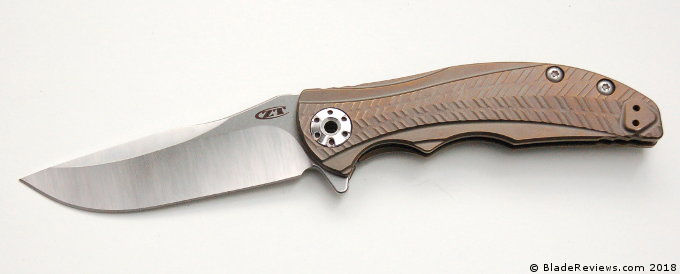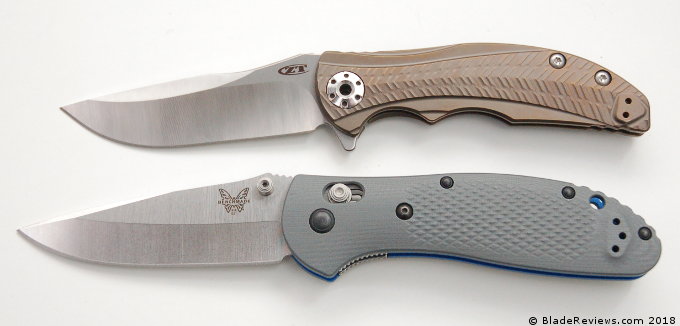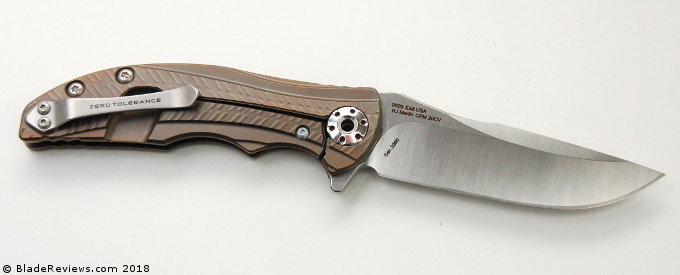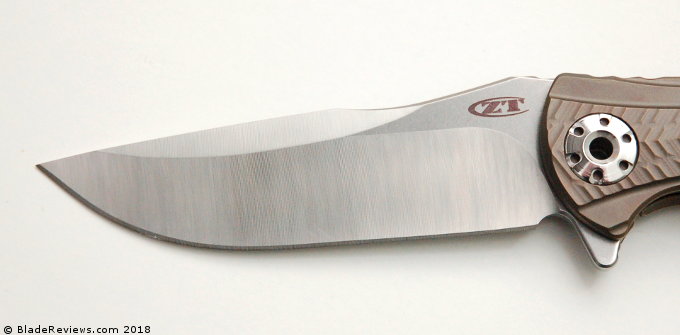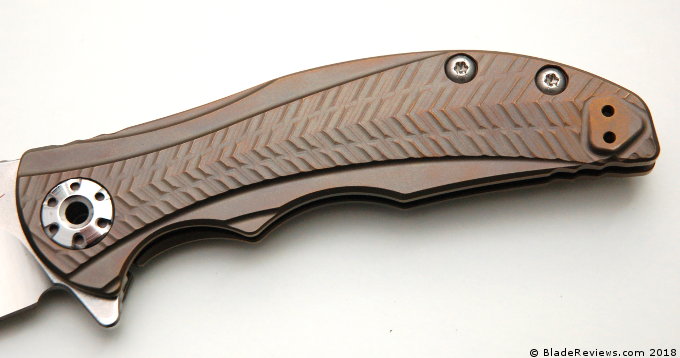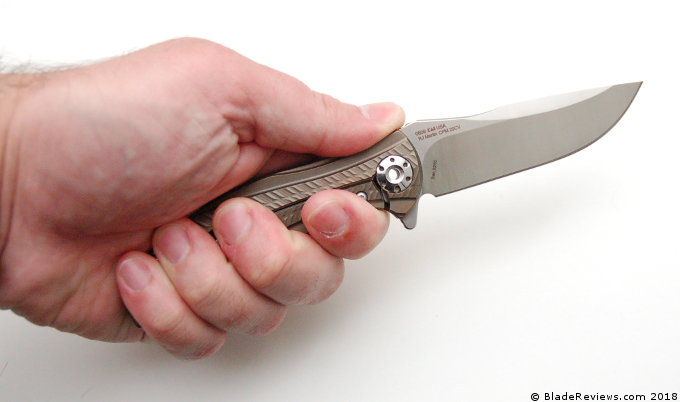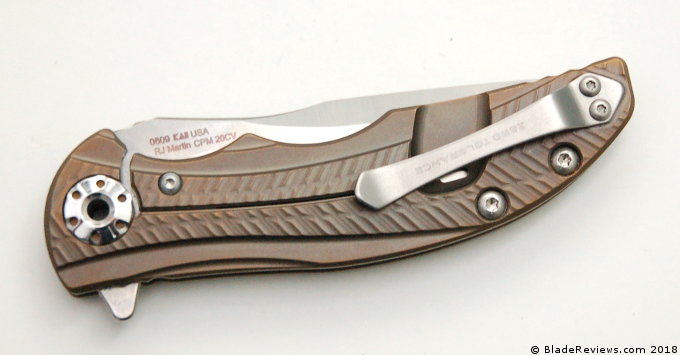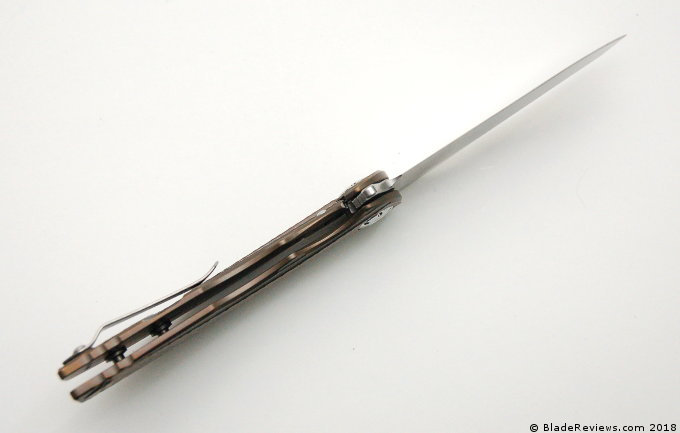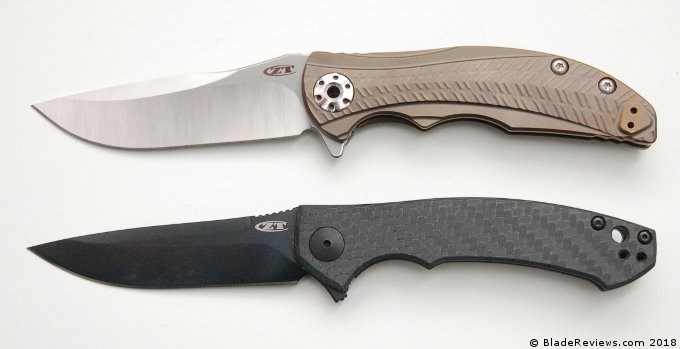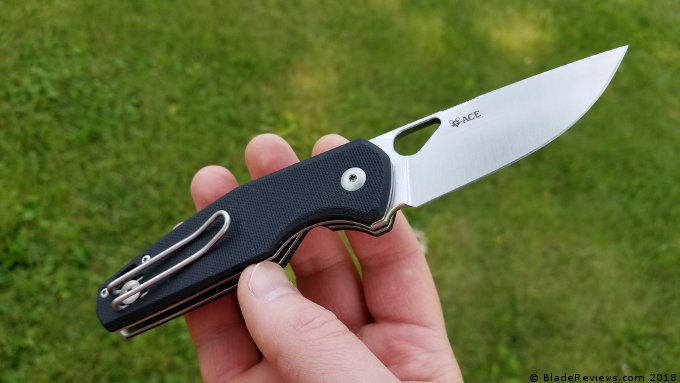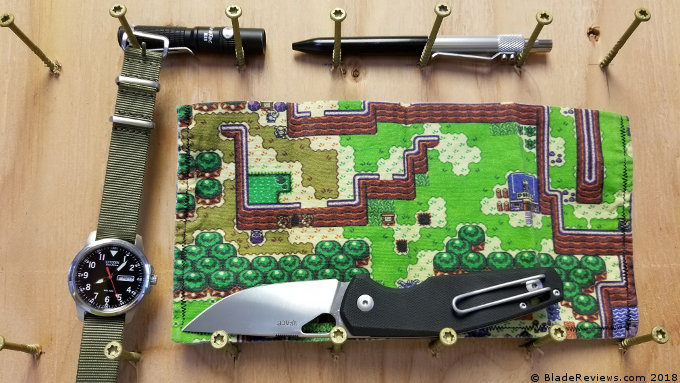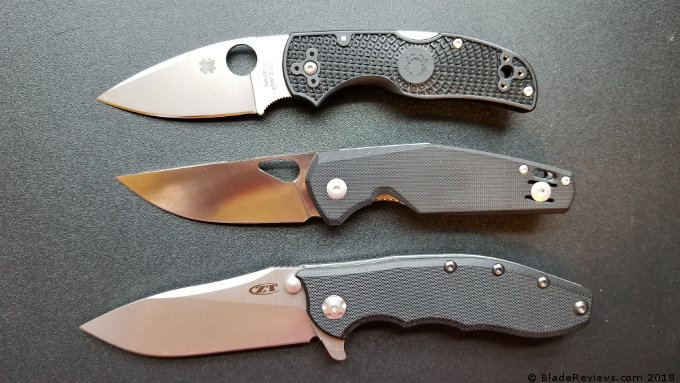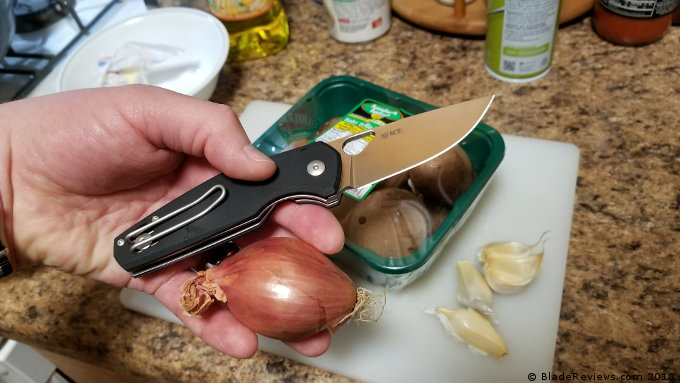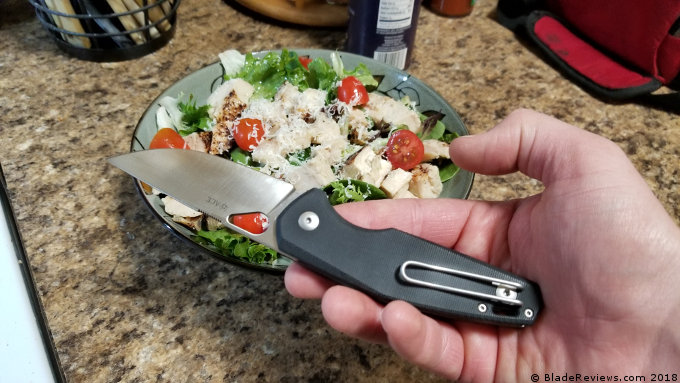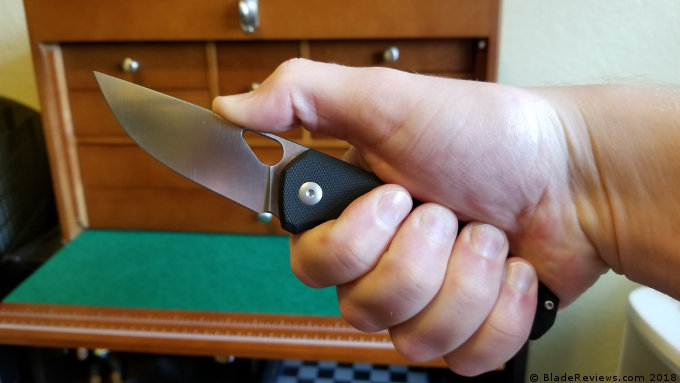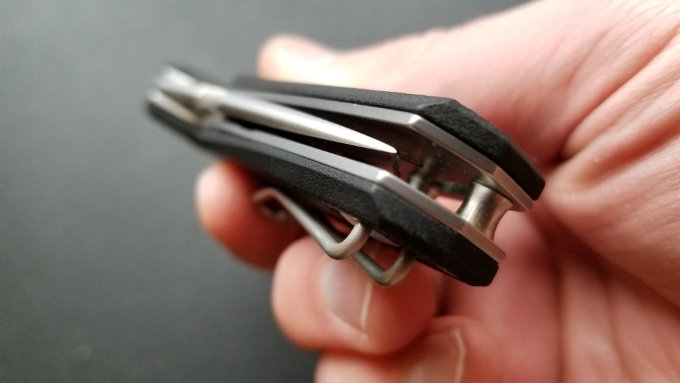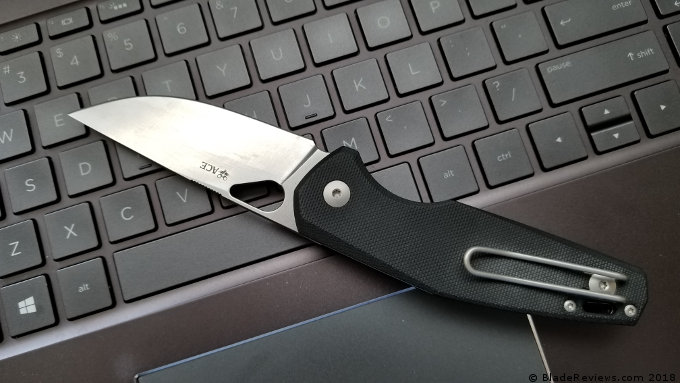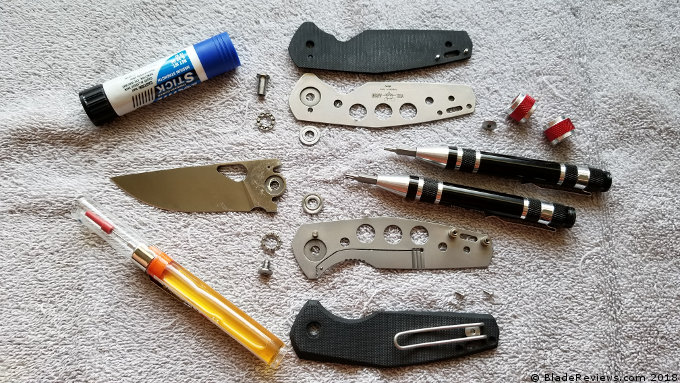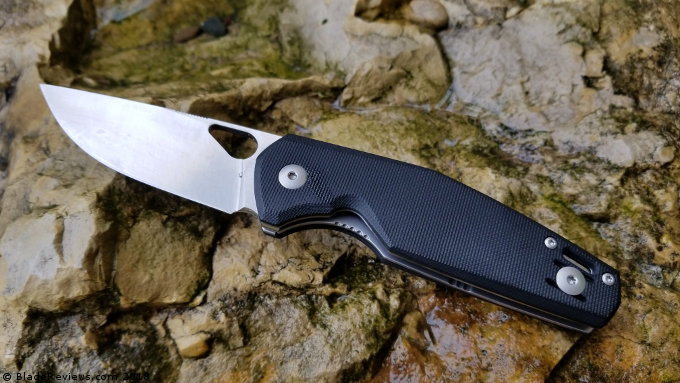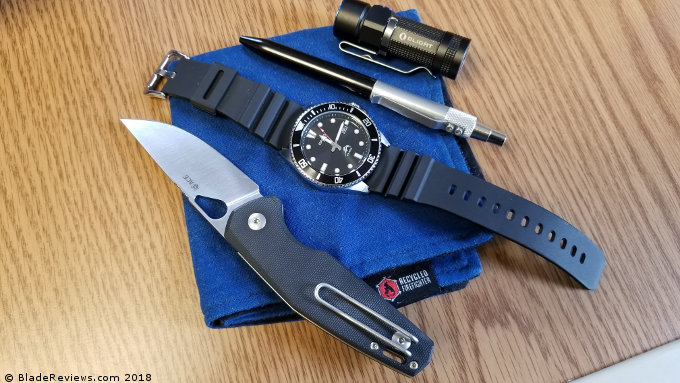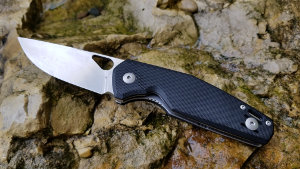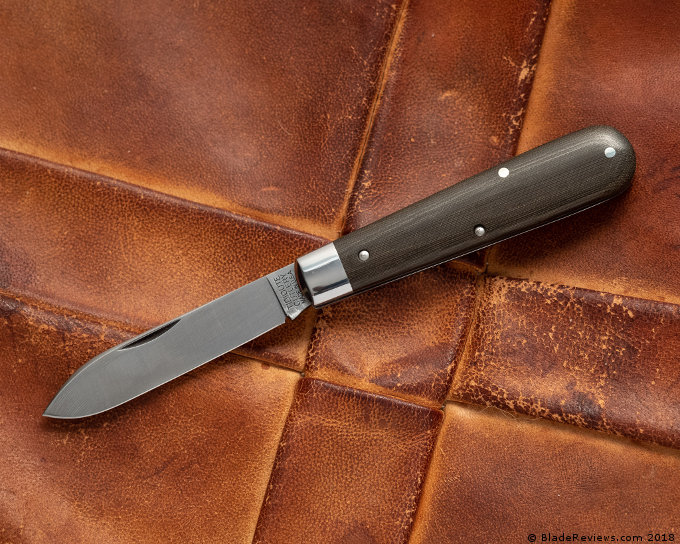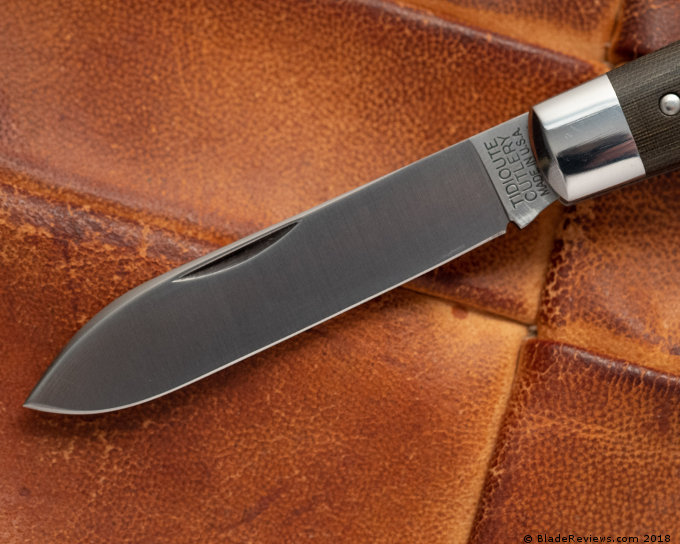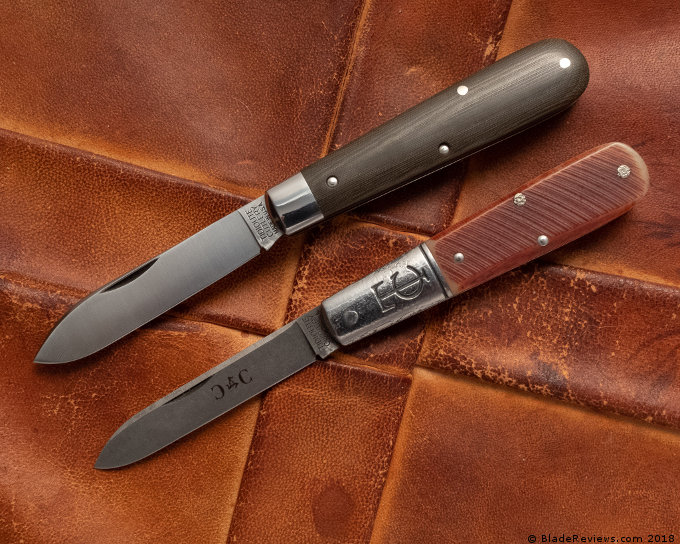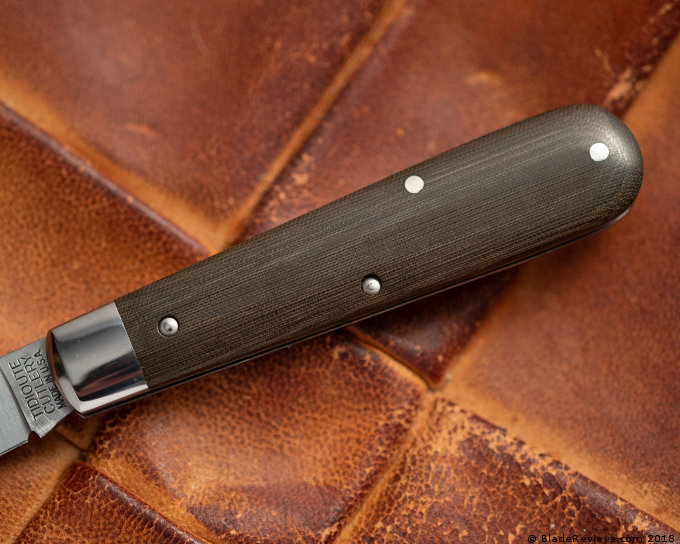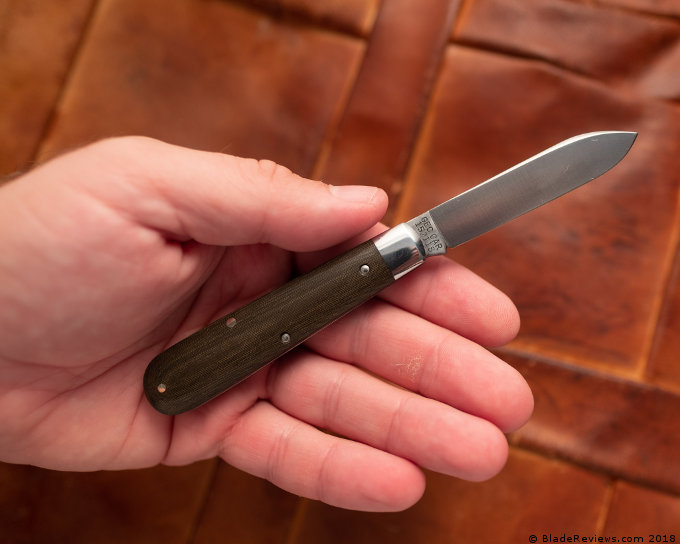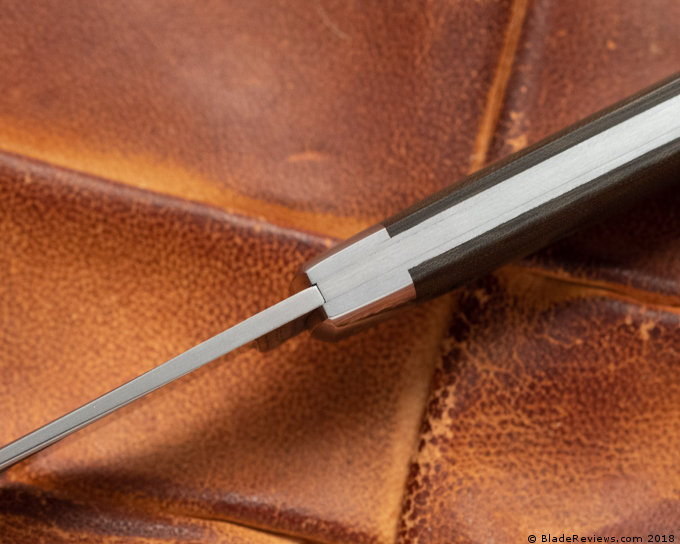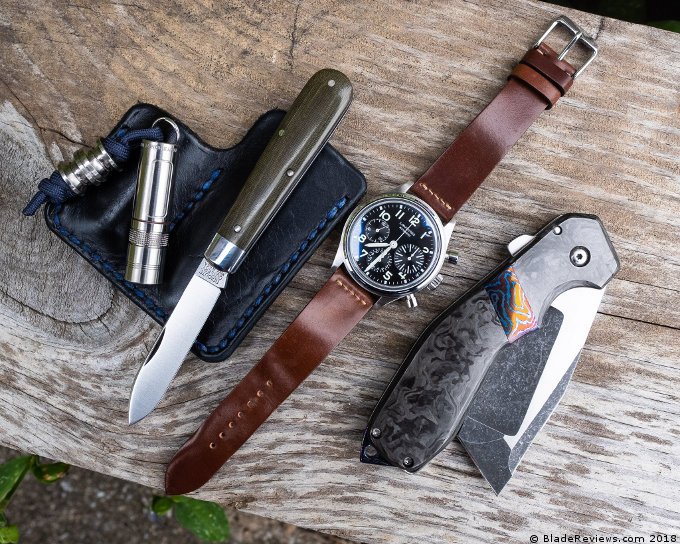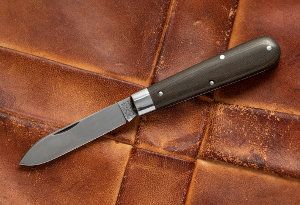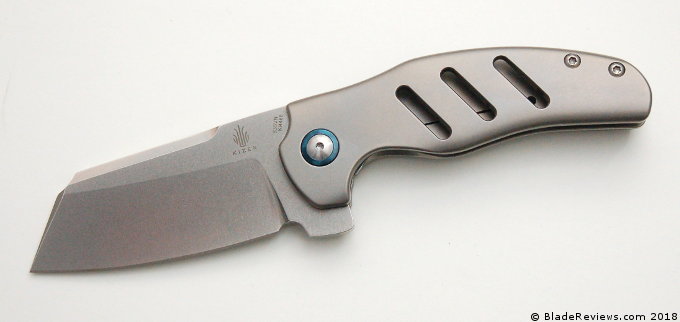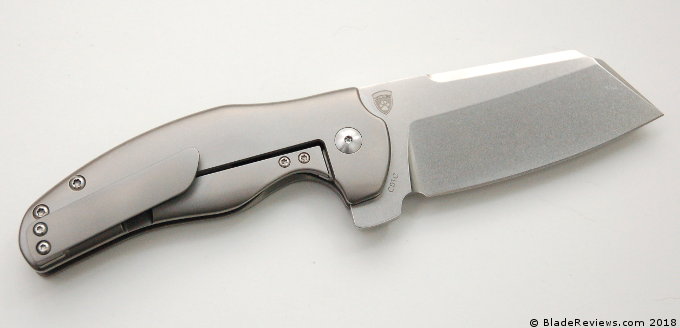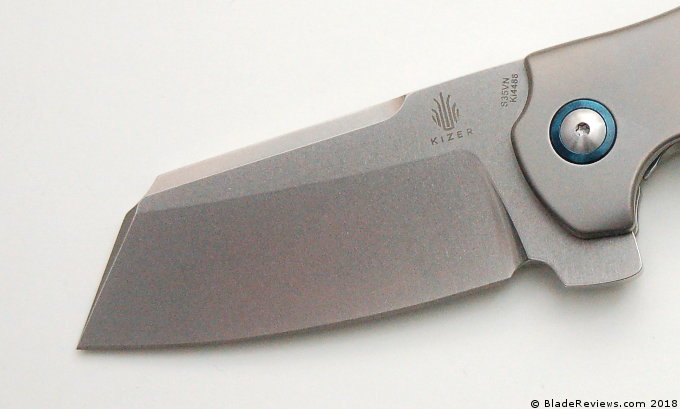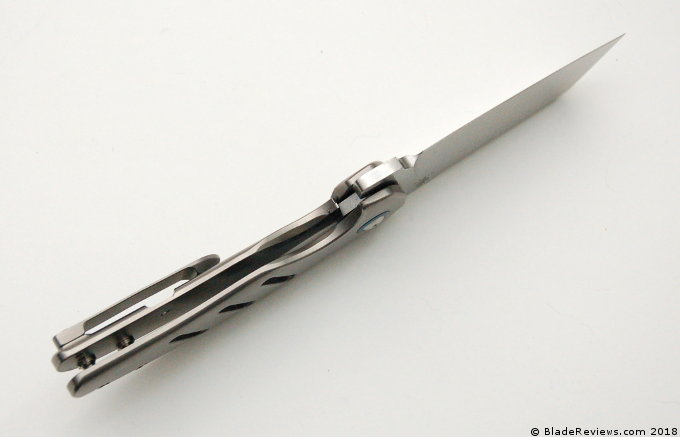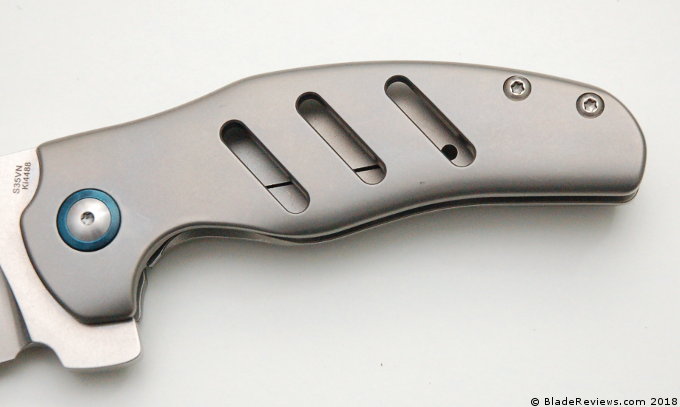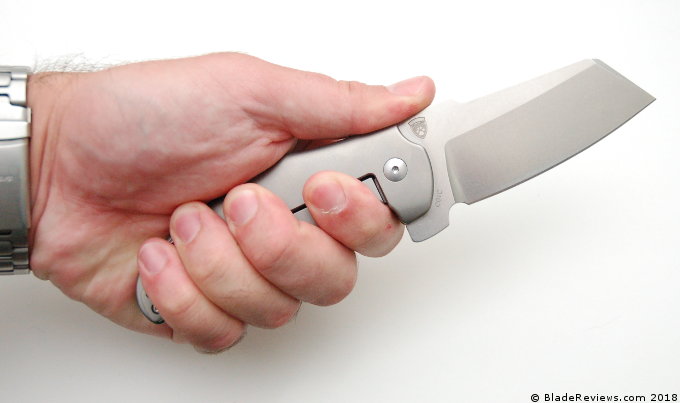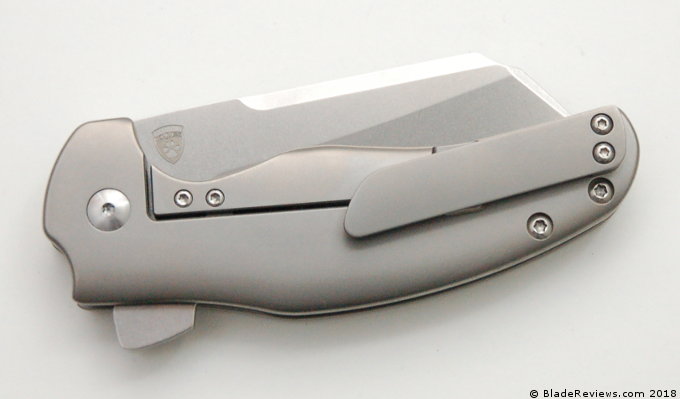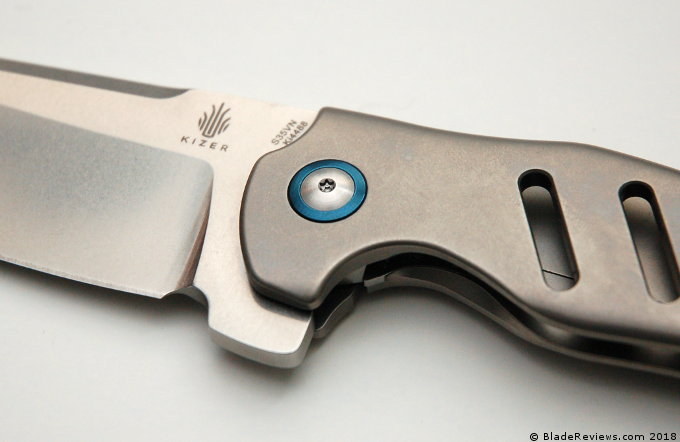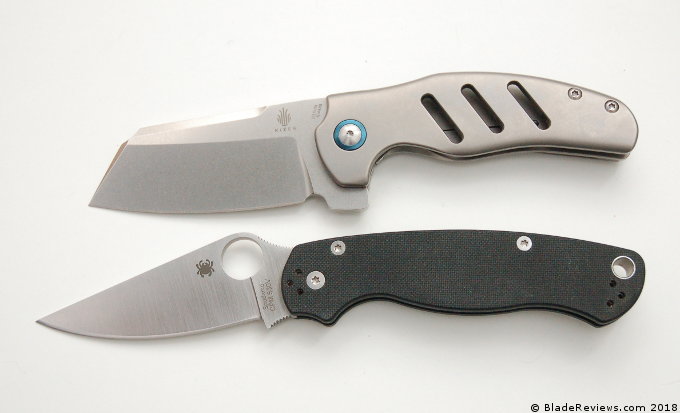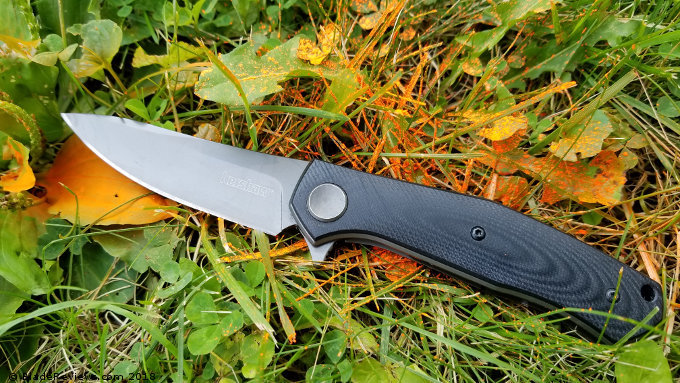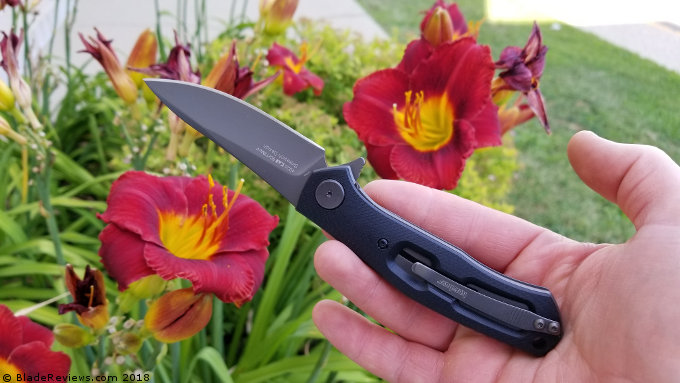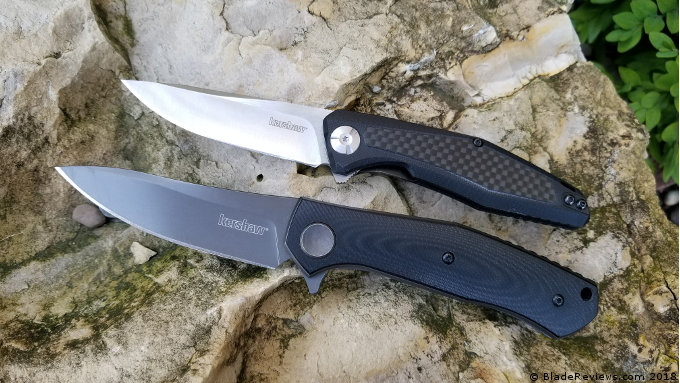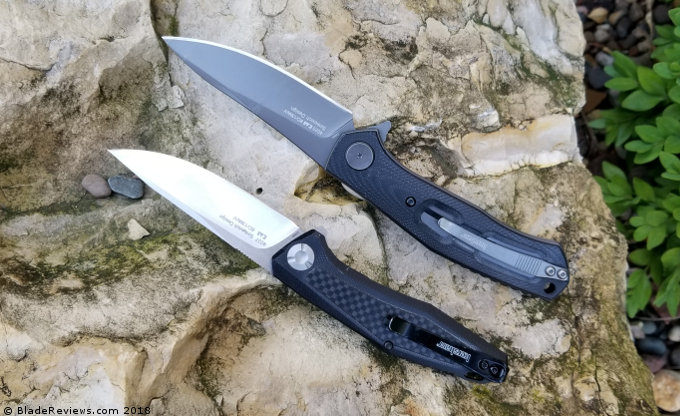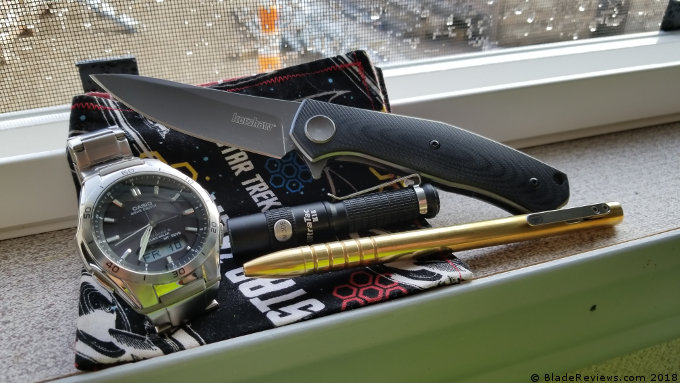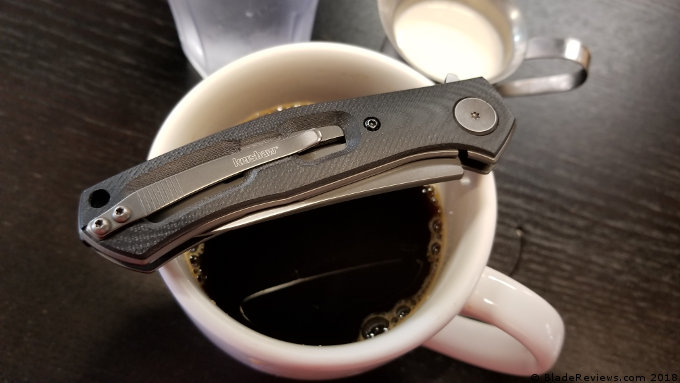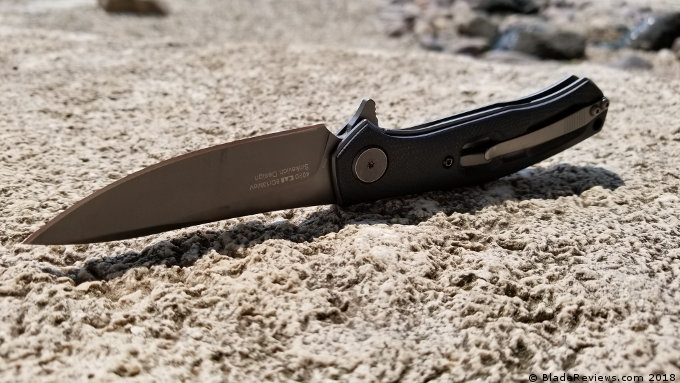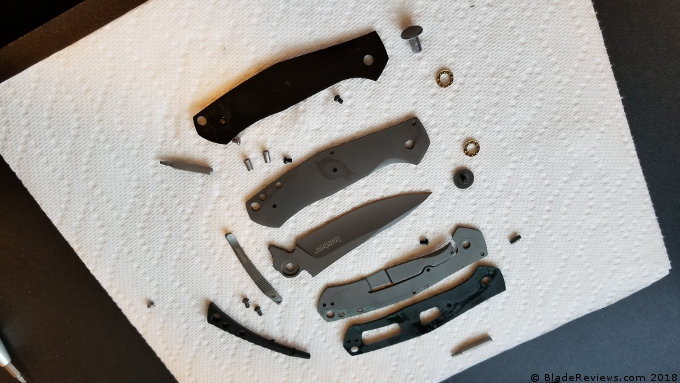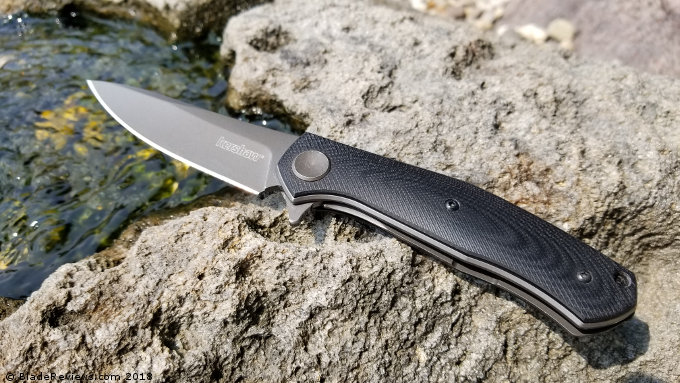Several years ago I watched a Nutnfancy video while I was trying to research a new firearm that I had purchased (I did this backwards back then). This led me to the realization that my life wasn’t complete without a pocket knife. My first purchase was a Spyderco and that led to nearly a decade love affair with the brand.
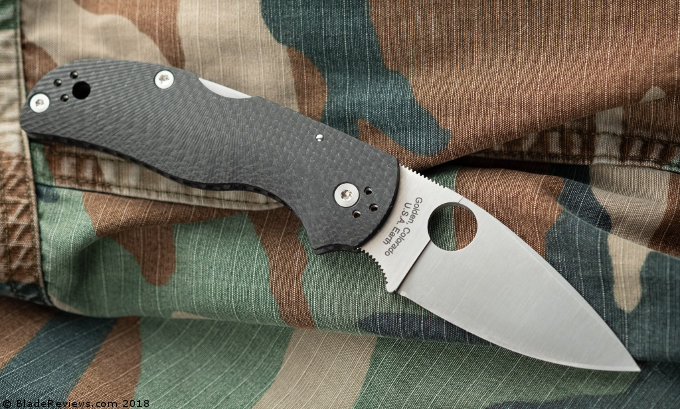
Buy the Native 5 in Carbon Fiber at BladeHQ
Spyderco as a brand started in 1978 in Golden Colorado by Sal Glesser, over the last forty years the brand has explored many different steel combos, opening methods, locking systems, and more. Recently, it seems like Spydero has been ratcheting their game up in order to compete with the KAI brands (Kershaw, ZT, etc) and Benchmade by adopting super steels, exploring more complex finishing methods, and partnering with notable custom knife makers/designers.
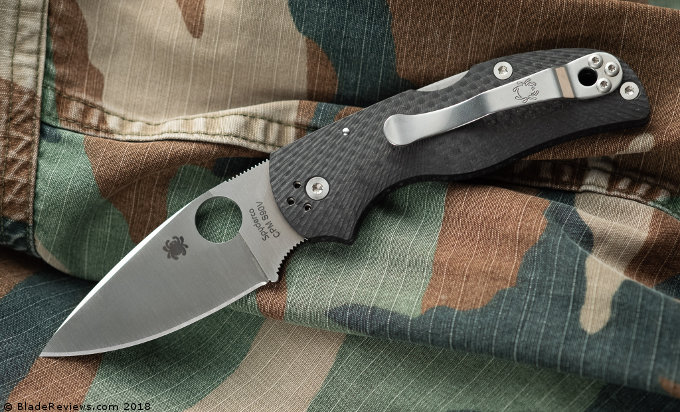
Today we are looking at the Spyderco Native 5, first introduced in 1997 as the Native, but not just “any” Native 5, the [easyazon_link identifier=”B0199VGG7Q” locale=”US” tag=”brdfkdfk-20″]Fluted Carbon Fiber/S90V[/easyazon_link] premium version of the knife. The Native has been in Spyderco’s catalog forever, and is arguably one of their best EDC blades. This special edition is like cranking the amp to 11. However, before we go any further let’s review some specs:
- Blade: 2.875”
- OAL: 7”
- Thickness: .436” not counting clip .623” with clip
- Blade Thickness: .127”
- Steel: S90V
- Weight: 2.8 oz
- Lock: Lockback
- Made in the USA
All Measurements are my personal measurements and may differ from the manufacturer’s specifications.
Blade
The Spyderco Native 5 is one of the brand’s famously leaf shaped, flat ground blades. I’ve always loved these because they simple excel at most daily EDC tasks. In my case that’s generally relegated to slicing some fruit for lunch, opening packages, and the like and it has been a joy for that.
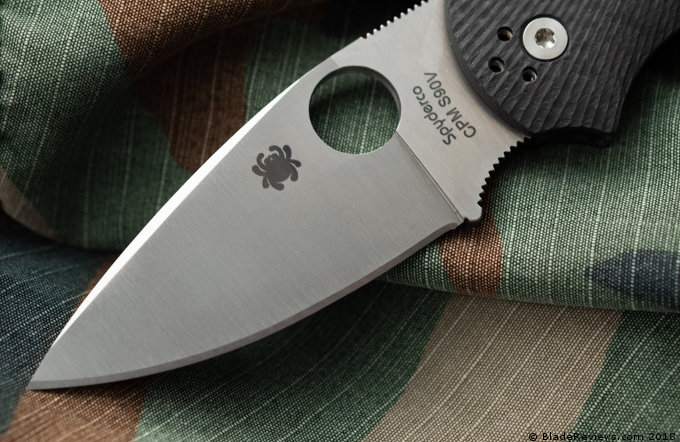
The Native’s blade tapers to a sharp and delicate tip that will fulfill any and all of your puncturing desires. Aesthetically the flat grind is accented by a small but well placed swedge that runs the majority of spine but doesn’t interfere with the height of the grind.
As for the steel, I think this is where it really gets interesting; S90V is a powdered steel from crucible that’s known for its fantastic edge retention and stain resistance. In my experience I have found that S90V prefers a toothy “utility edge” if you will, which Spyderco happily provides from the factory—the nice thing is you won’t need to sharpen it for a long, long time.
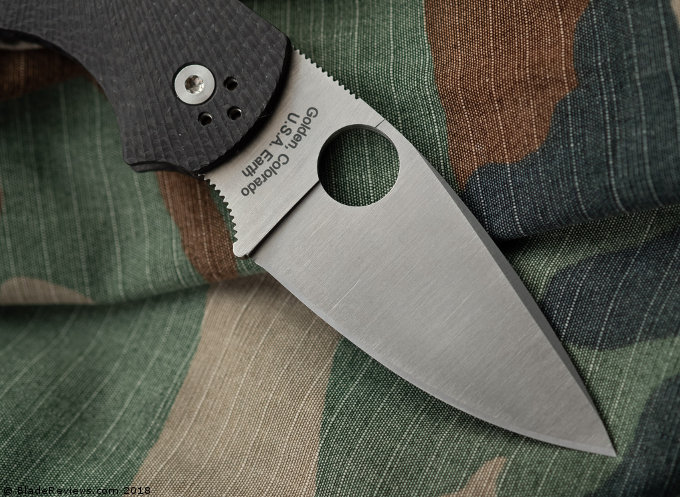
Handle, Ergonomics, and Pocket Clip
Spyderco wanted to make this particular Native 5 to be as agile and unobtrusive as possible. To do that they made the handles out of two solid slabs of CF and opting to not use liners at all. The clip screws directly into a larger portion of the backspacer/spring assembly as opposed to a liner. This has resulted in a knife that weighs less than 3oz. Spyderco then went and added this starburst style milled texture to the handle scales which offers an excellent grip when in hand.
Grip texture aside, the shape and flow of the handle allows you to get a solid full hand grip on the knife—there’s a solid choil towards the front that will prevent you hand from sliding at all, or you can jump it with your index finger for a more “choked-up” grip if needed. The result is a great working knife that is comfortable in a variety of grips.
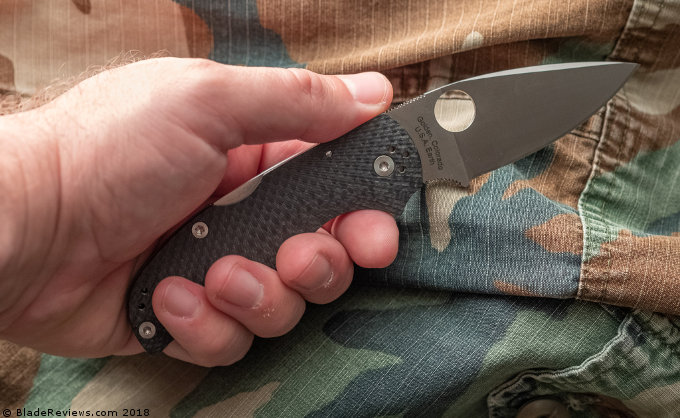
The clip is Spyderco’s their regular spoon style three screw clip. I feel like this is a fairly known-quantity at this point. They use similar clips all across their production line from entry level (think Tenacious) to high-end as you see here.
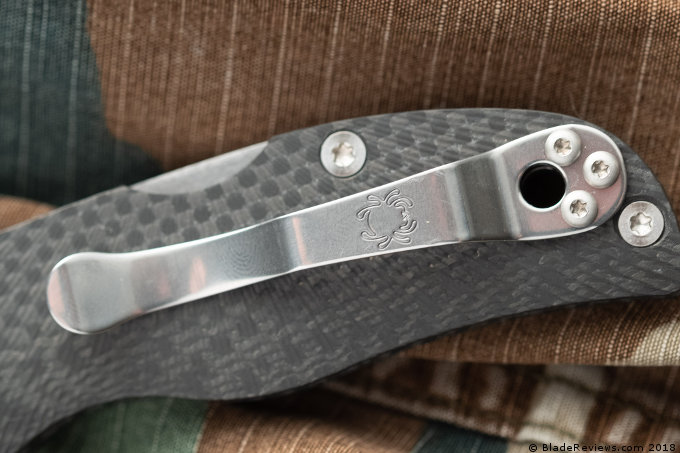
Not much that I’d really critique here. I like this clip and I feel that it does its job well. Some folks prefer deep carry clips, I do not, but I believe there are after market options available to you if that’s something you’re after.
Deployment and Lockup
Being a Spyderco the Native 5 makes use of a 12.6mm hole opener or “spydiehole.” I’ve always been a fan of these and this one is no exception. The “action” of the knife however is different than most Spydercos in that it’s a lock back, and because of that it has tension from the lock across the blade then entire time it’s opening. It’s not really a “flickable” knife in the normal sense.
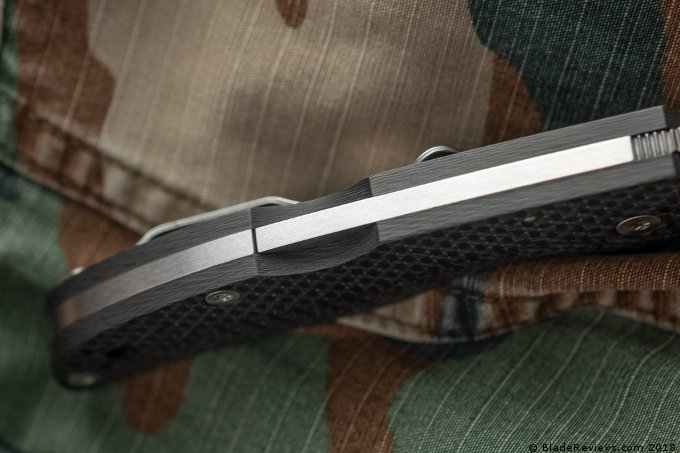
The lockback itself is very well executed; smooth while opening, and pop’s into place with a resounding click. The tension on the spring isn’t too tight when releasing the lock, however closing the knife, for me, is a two handed operation or maybe one hand and the back of your leg—you get the idea. As you’d expect there’s zero play in any direction, the knife as a whole feels extremely solid.
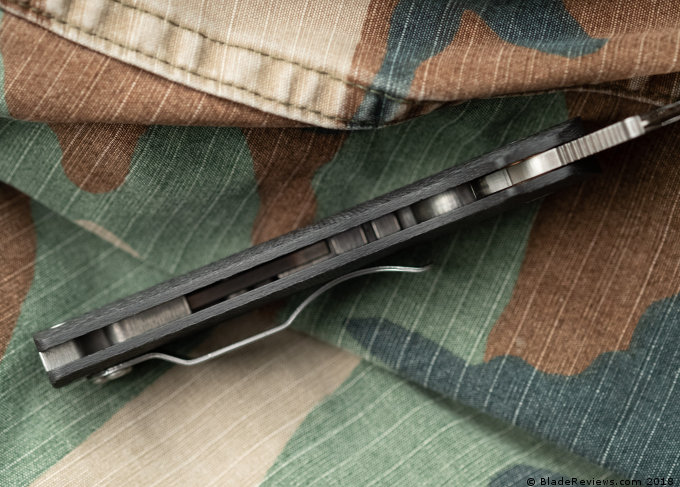
Spyderco Native 5 in Fluted Carbon Fiber and S90V Review – Final Thoughts
In my mind there are two real competitive options when it comes CF/S90V production knives. The first is the Benchmade 940-1 and the second is this one. Before I wrap this review entirely, I want to give a little compare/contrast of the two and offer a personal opinion if you’re trying to choose.
BladeHQ currently has the Benchmade priced at $267.75 vs the Native at $233.97. The Benchmade is a larger knife in a slimmer profile, offering around half an inch more blade than the Native. Due to the Benchmade’s thinner handle it’s going to present a better profile in pocket than the Spyderco will. The Native, however, feels rock solid in every way once opened whereas I am able to muscle some movement out of the Benchmade’s lock when opened. This doesn’t mean that I’d expect the Axis lock to fail, but it will come down to personal preference as to whether you’re okay with some wobble. The two knives are the same thickness and roughly the same weight.
Basically I think it’ll boil down to a few things: The first and most obvious will be cost, the Spyderco is ~$30 cheaper, this might matter to you, and if it does there’s no need to go any further. The second is lock preference. While I think the lock back on the Native feels tighter then the Axis, I do prefer the Axis from a usability standpoint; it also allows you a knife that you can flick open and closed. The third and final thing to consider is just the overall appeal.
Personally, I love the finish to the Benchmade’s CF with the faux milled bolster and how it tapers towards the top and bottom. The Spyderco’s sunburst fluting is cool, but much more subtle and it gives the CF more of a matte quality dampening down some of the dimension in the weave. For those reasons, I think if I had to pick one, I’d still get the Benchmade… but that’s just me. The Spyderco, as my above review has shown, is an excellent piece and a capable tool.
In the end, I think either knife would be suitable for two people primarily… a newer collector that’s looking to branch into higher end materials but isn’t quite ready to make the jump to CRK or customs yet or the seasoned collector that’s looking for a piece to use around the house in the place of some of their more expensive knives. Just my .02.
- An Improved Classic: The Native model has been a mainstay of Spyderco's product line for years as a result of it's Superior Quality and affordability. The state of the art Native 5 is available in an array of handle choices and colors.
- USA Made: Spyderco takes tremendous pride in every knife we make, but the ones crafted in our Golden, Colorado factory are special because we invest a piece of ourselves in every USA-Made knife we create.
- Superior Quality: This Carbon Fiber handle is made of graphic fibers woven together then fused with epoxy resin. This solid, yet lightweight handle is intricately machined with a fluted sunburst patern.
- Dependable: If you are looking for control and precision, look no more. This knife features our PlainEdge grind which is known for creating a smooth and exact cut.
- High-Strength Lock: The Back Lock mechanism is known for it's high-strength and ease of use. The locking system is positioned on the back of the handle.
I recommend purchasing the Spyderco Native 5 in Fluted Carbon Fiber at Amazon or BladeHQ. Please consider that buying anything through any of the links on this website helps support BladeReviews.com, and keeps the site going. As always, any and all support is greatly appreciated. Thank you very much.
Editor’s Note: The original Native 5 has grown on me steadily over the past few years. It is at the point where I prefer my Native 5 over my Sage 1 for daily carry (gasp). I like it more than the Sage because it is lighter, and the pocket clip is sturdier. The fact that it’s a USA made piece doesn’t hurt either. It’s a great size for EDC and has proven itself to be a tremendous work knife. To me this upgraded version of the Native 5 looks excellent and I’ll look to snag one for myself.
